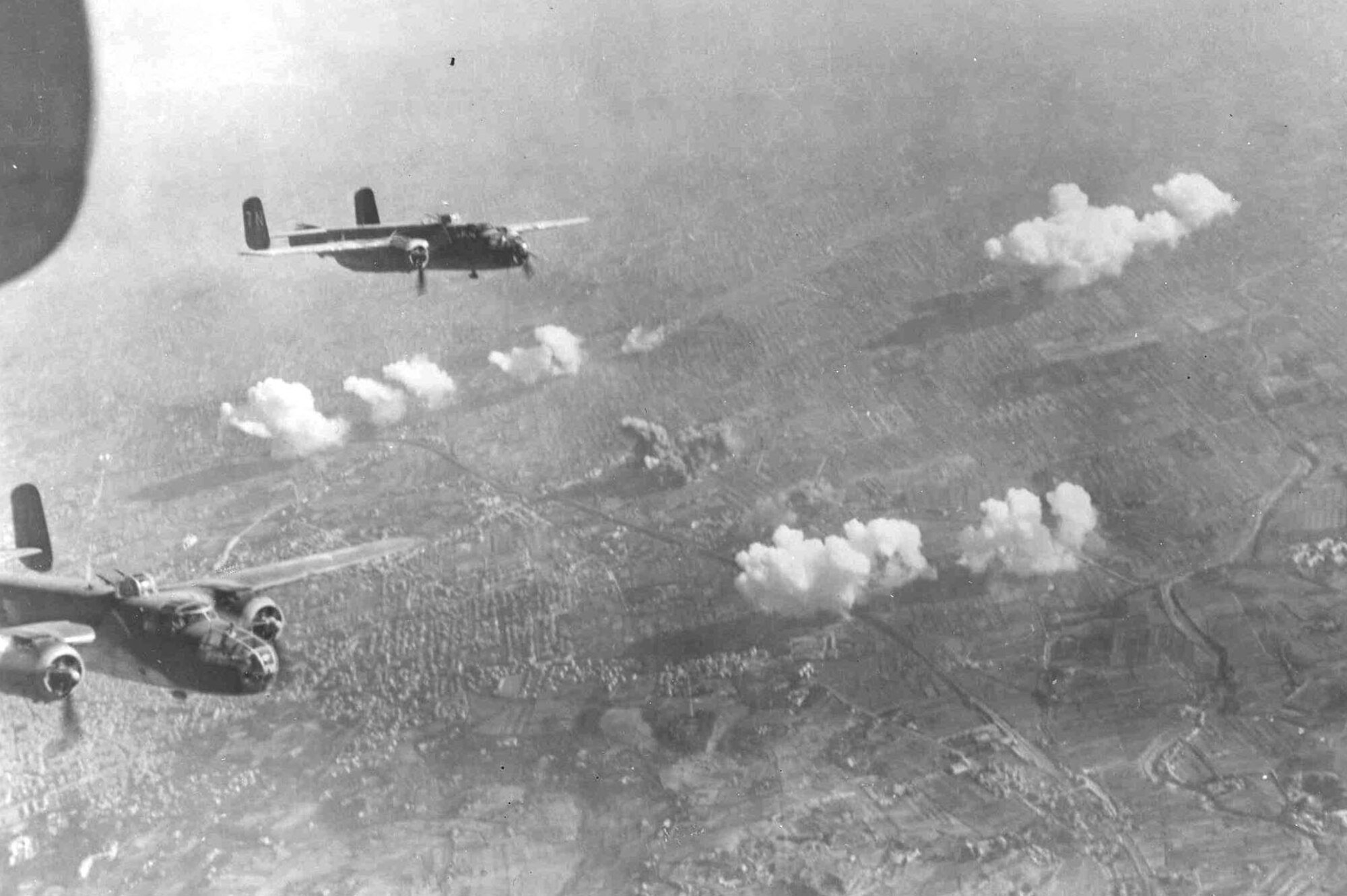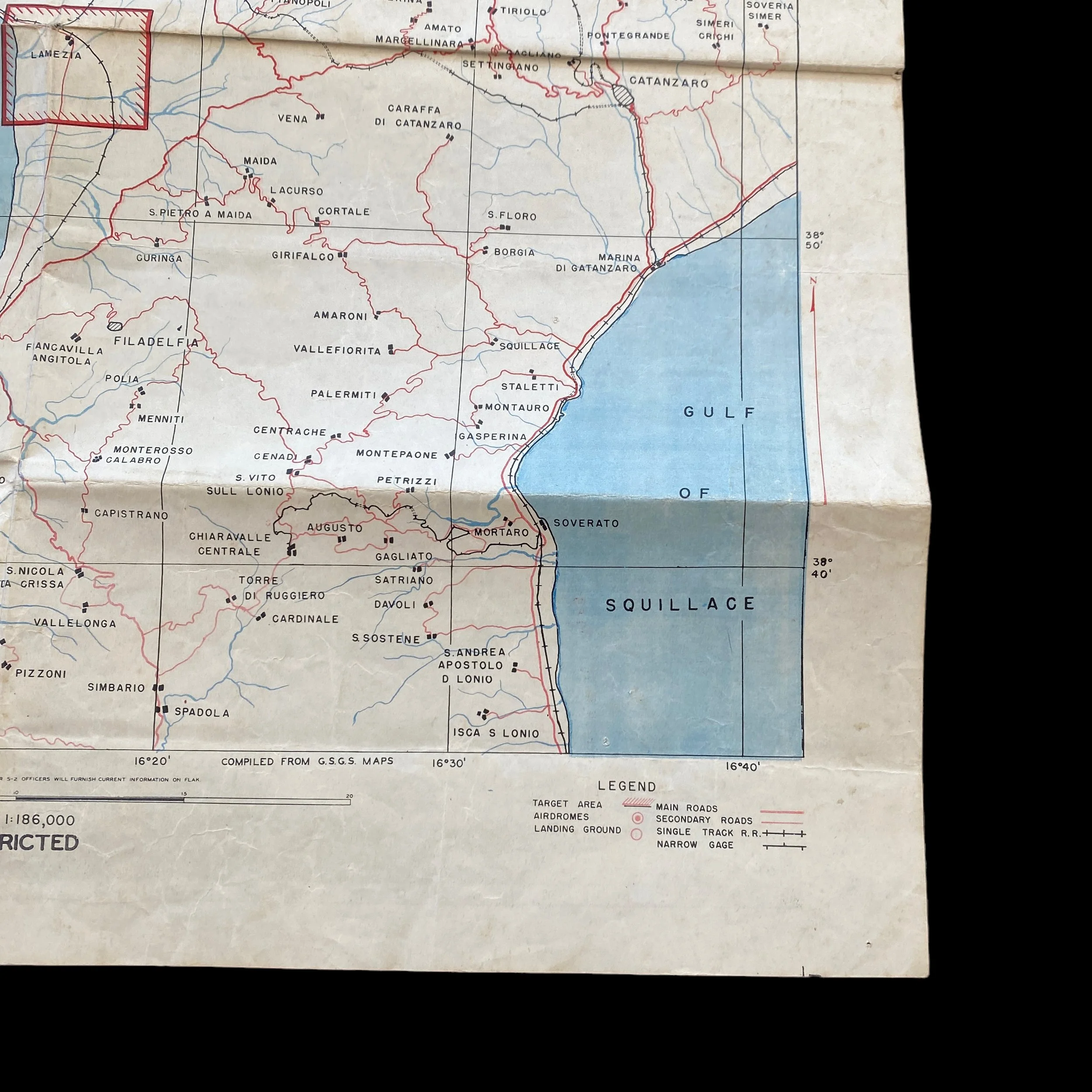RARE! WWII 1943 Allied Invasion of Italy U.S. Air Force Bomb Group "LAMEZIA - ITALY" Air Raid Target Map














































RARE! WWII 1943 Allied Invasion of Italy U.S. Air Force Bomb Group "LAMEZIA - ITALY" Air Raid Target Map
Comes with C.O.A.
DOUBLE-SIDED
Historical documentation of the Lamezia, Italy raids:
“There were no large-scale light bomber attacks on communications, the heaviest effort against a single target being a series of raids on 27 and 28 August by a total of fifty-eight RAF and SAAF planes against Lamezia rail and road junction. Fighter-bombers were more active. Twelfth Air Force A-36's attacked rail and road junctions at a halfdozen points and marshalling yards at three, all in Calabria; after bombing they usually strafed trains and transport vehicles. P-40's attacked bridges, motor transport, and barracks. At night, Malta-based Mosquitoes bombed and strafed trains, road traffic, and railway stations on a small but highly successful scale.”
HQ 321st BG Mission Summary: (Ops Order 98/mission 97) Group Mission # 98:
“300 R.R. cars, of which 60/70 appeared to be tank cars, at Curinga were strafed by bombers. 100 cars at Pizzo. 100 cars at Lamezia. Sidings at Briatico were filled with cars. One train in yards at target. 8 M/T SE of Lamezia heading S/E.”
MTO - WESTERN MEDITERRANEAN (NAAF - North African AF): In Italy, Northwest African Strategic AF (NASAF) medium bombers hit Staletti and a temporary bridge at Angitola. In Sicily, Northwest African Tactical AF (NATAF) light and medium bombers hit shipping in the Straits of Messina and from N of Messina to Capo Pelaro. A-36's and P-40's concentrate on communications targets on the toe of Italy, hitting trains, trucks, railroad yards, and sidings at Nicastro, Lamezia, Amantea, and Sambiase. Also bombed are barges, ferries, and small vessels off Messina, Sicily and in the Golfo di Sant' Eufemia, Italy.
The Allied invasion of Italy was the Allied amphibious landing on mainland Italy that took place from 3 September 1943, during the Italian campaign of World War II. The operation was undertaken by General Sir Harold Alexander's 15th Army Group (comprising General Mark W. Clark's American Fifth Army and General Bernard Montgomery's British Eighth Army) and followed the successful Allied invasion of Sicily. The main invasion force landed around Salerno on 9 September on the western coast in Operation Avalanche, while two supporting operations took place in Calabria (Operation Baytown) and Taranto (Operation Slapstick).
During World War II, the United States conducted numerous aerial bombing raids on various targets in Italy, including Lamezia. These missions were essential in the war effort, as they helped to weaken the enemy's infrastructure and military capabilities. One crucial aspect of these bombing raids was the use of target charts, which were essential in ensuring that the bombs hit their intended targets.
Target charts were detailed maps that showed the location of the target, as well as any nearby landmarks or obstacles that could affect the accuracy of the bombing. These charts were created using aerial reconnaissance photos and other intelligence, and they were meticulously studied by the pilots and bombardiers before each mission. The charts included information such as the target's size, shape, and elevation, as well as any known defenses or anti-aircraft emplacements in the area.
During the bombing raids on Lamezia, the target charts were particularly important due to the complex nature of the target. Lamezia was a major transportation hub for the Axis powers, and it was heavily defended by anti-aircraft guns and other defenses. The target charts helped the pilots and bombardiers to navigate through the defenses and hit their targets with precision.
The use of target charts was just one of the many innovations that helped the United States to achieve victory in World War II. The development of precision bombing techniques and the use of advanced technology helped to minimize civilian casualties and reduce the overall impact of the war. While the use of aerial bombing was controversial at the time and remains a subject of debate today, it is clear that these missions played a crucial role in the outcome of the war.
In conclusion, the World War II US aerial bombing raids on Lamezia, Italy were an essential part of the war effort, and the use of target charts was crucial in ensuring the success of these missions. The development of precision bombing techniques and the use of advanced technology helped to minimize civilian casualties and reduce the overall impact of the war. While the use of aerial bombing remains a subject of debate, it is clear that these missions played a crucial role in the outcome of the war.